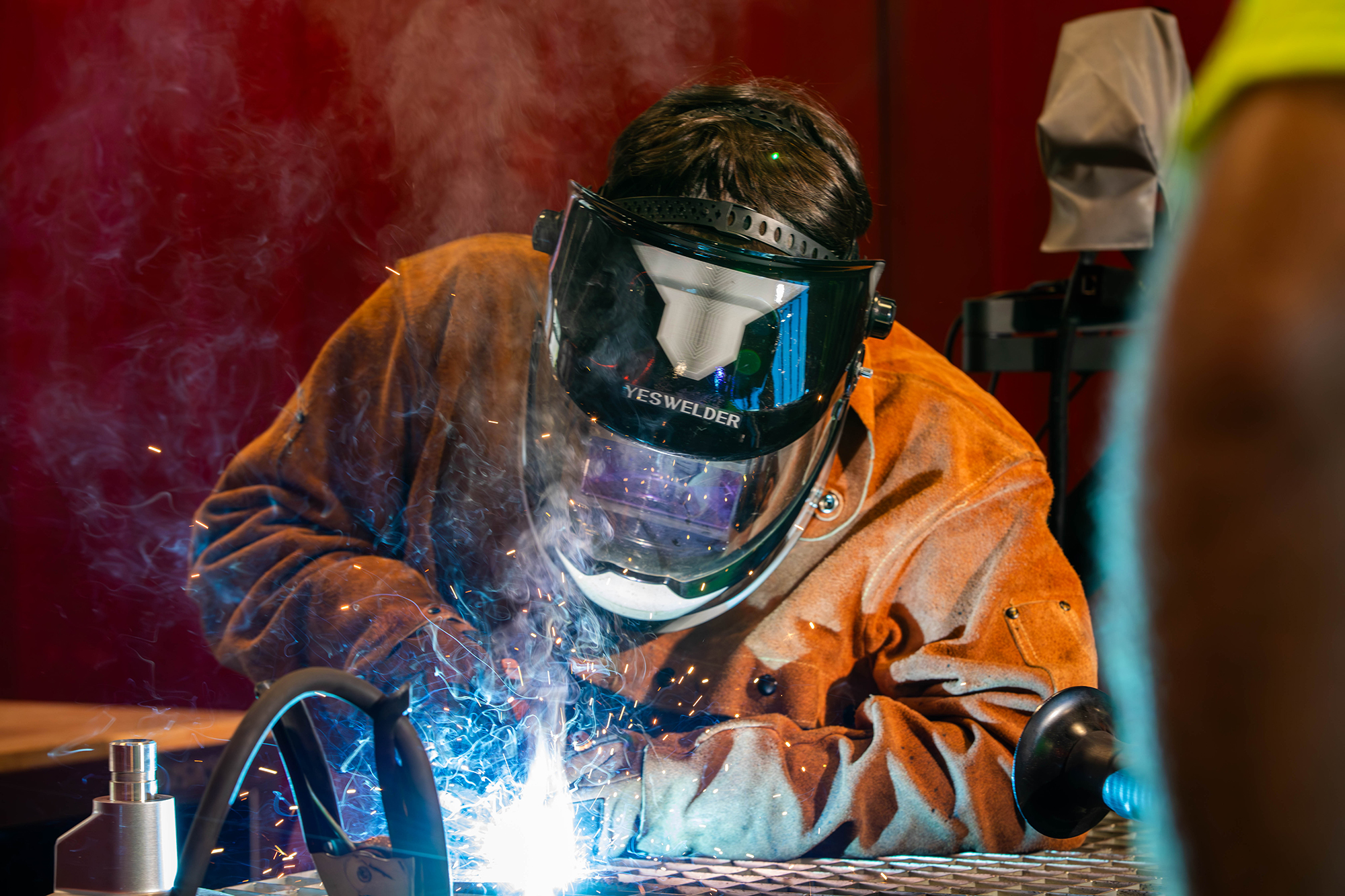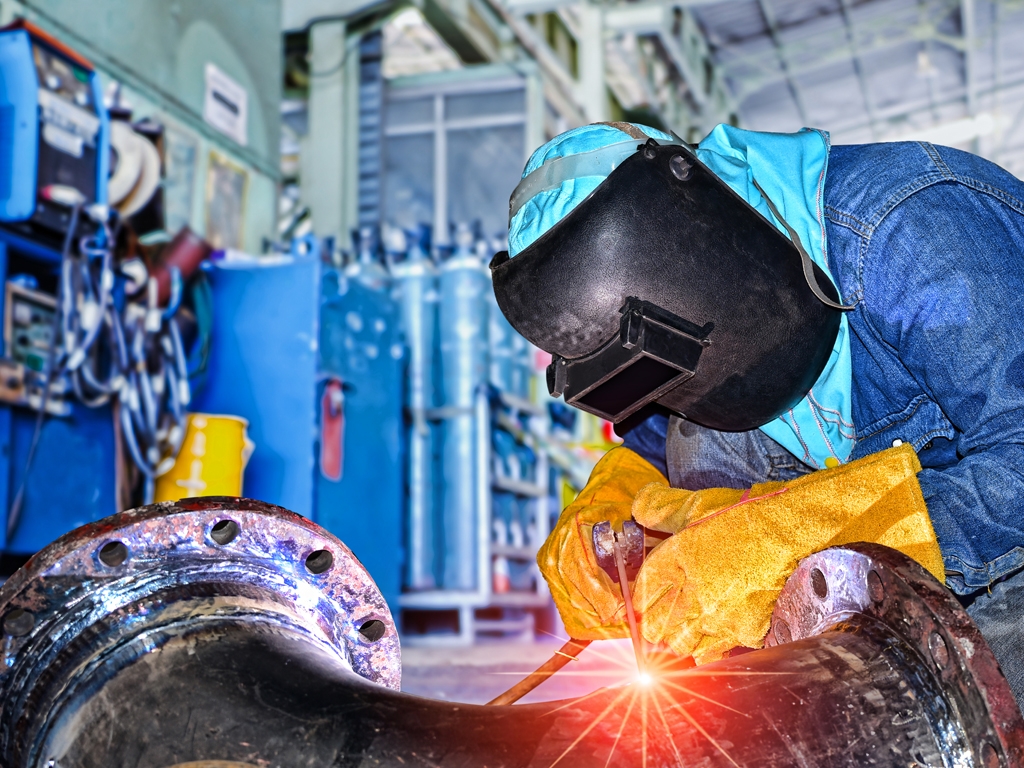Welding issues explained and solved by Montana Mobile Welding and Repair Belgrade Fabrication
Everything about Welding: Trick Insights Into Techniques and Best Practices for Success
Welding incorporates a variety of techniques, each suited for particular products and applications. Recognizing these approaches, such as GMAW, SMAW, and TIG, is essential for achieving suitable results. The right devices and security methods can not be overlooked. As preparation and fixing play crucial roles in the welding process, understanding these aspects can considerably enhance the quality of the end product. What are the crucial variables that guarantee a successful weld?
Recognizing Various Welding Techniques
Welding methods include a variety of methods, each suited to specific applications and materials. Among one of the most usual techniques are Gas Metal Arc Welding (GMAW), Shielded Steel Arc Welding (SMAW), and Tungsten Inert Gas Welding (TIG) GMAW, additionally called MIG welding, is prominent for its speed and versatility, making it optimal for slim materials. SMAW, or stick welding, is preferred for its simpleness and efficiency in outdoor environments, specifically with thicker steels. TIG welding supplies precision and control, making it appropriate for intricate job and non-ferrous metals (Montana Mobile Welding and Repair Welding). Each method has its distinct advantages and factors to consider, enabling welders to select the finest approach based on the project's demands, product kind, and preferred results. Recognizing these strategies is vital for successful welding
Important Welding Equipment and Tools
While different welding techniques require particular abilities, the best tools and devices are just as necessary for attaining quality outcomes. Crucial welding devices consists of welding machines, which differ depending upon the method-- such as MIG, TIG, or stick welding. Protective gear, consisting of aprons, helmets, and handwear covers, assurances safety and security and convenience during the process. Additionally, fixtures and clamps aid secure materials in position, guaranteeing precision in welds. Consumables like welding poles, wire, and shielding gas are additionally essential components that influence the top quality of the weld. Devices such as mills and cutters promote surface preparation and post-weld finishing, contributing to an expert result. Purchasing top notch tools ultimately boosts the performance and effectiveness of welding tasks.
Safety And Security Practices in Welding
Appropriate security methods are necessary in the welding industry to protect employees from potential dangers. Welders should use proper individual protective devices (PPE), including safety helmets with proper shading, handwear covers, and flame-resistant clothes. Appropriate ventilation is essential to lower direct exposure to damaging fumes and gases created throughout the welding procedure. In addition, employees must be learnt the correct handling of welding equipment to stop mishaps. Fire safety steps, such as keeping combustible products away from the welding location and having fire extinguishers conveniently offered, are necessary. Regular assessments of tools and workspaces can help recognize potential dangers before they cause mishaps. By sticking to these security practices, welders can produce a more secure working setting and minimize threats related to their profession.
Readying Products for Welding
Preparing products for welding is an essential action that greatly affects the top quality and integrity of the end product (Montana Mobile Welding and Repair). Proper preparation includes cleaning the surface areas to remove pollutants such as oil, dirt, and corrosion, which can jeopardize the weld. Methods such as grinding, sanding, or utilizing solvents are frequently used to accomplish a tidy surface area. Additionally, guaranteeing that the materials fit with each other snugly is important; voids can cause weak welds. It's likewise vital to consider the alignment and positioning of the parts, as this will impact the convenience of welding and the last outcome. Selecting the appropriate filler material and guaranteeing compatibility with the base metals is crucial for attaining solid, durable welds.
Tips for Getting High-Quality Welds
Achieving high-grade welds calls for focus to information and adherence to finest techniques throughout the welding procedure. Proper joint preparation is vital, making sure surfaces are cost-free and tidy from pollutants. Choosing the appropriate filler material and welding strategy based on the base metals is essential for ideal bonding. Maintaining constant travel speed and angle while welding can promote and prevent defects uniformity. Furthermore, managing heat input is crucial; extreme heat can bring about bending and compromised joints. Consistently inspecting the welds during the process permits immediate changes if needed. Finally, utilizing ideal post-weld treatments, such as cleansing and tension relief, can enhance the longevity and integrity of the weld, eventually making certain an effective result.
Troubleshooting Typical Welding Issues
Welding usually offers difficulties that can affect the quality and honesty of the end product. Typical issues such as porosity, irregular weld grains, and getting too hot can emerge, each needing details troubleshooting methods. Comprehending these issues is necessary for welders to boost their abilities and accomplish suitable results.
Porosity Troubles Clarified
Although porosity can frequently be neglected, it stays a critical concern in welding that can jeopardize the stability of a completed item. Porosity refers to the visibility of small gas pockets within the weld grain, which can lead and weaken the joint to early failing. This trouble generally emerges from contaminants, wetness, or improper shielding gas protection during the welding process. To mitigate porosity, welders must confirm that the base materials are dry and tidy, make use of suitable securing gases, and maintain consistent welding specifications. Routinely checking the devices and atmosphere can additionally help recognize possible issues prior to they manifest in the weld. Resolving porosity successfully is vital for attaining solid, sturdy welds that meet high quality standards.

Irregular Weld Beads
Inconsistent weld beads can significantly influence hop over to here the high quality and toughness of a completed product. Different aspects add to this concern, consisting of improper traveling rate, wrong amperage settings, and inconsistent electrode angles. When the welder relocates also rapidly, a grain may show up slim and do not have infiltration, while moving also gradually can cause excessive build-up. In addition, utilizing the incorrect amperage can cause either undercutting or too much spatter, both of which compromise weld integrity. The welder's strategy, such as irregular torch motion, can additionally lead to irregular grain look. To reduce these issues, welders need to concentrate on maintaining constant, regulated motions and making certain appropriate equipment setups to attain harmony in their welds. Uniformity is key to attaining solid and trustworthy welds.
Overheating and Bending Issues
Extreme warm throughout the welding process can bring about considerable getting too hot and buckling problems, impacting the architectural honesty of the workpiece. These problems commonly materialize as distortion, which can jeopardize placement and fit-up, making additional assembly testing. Elements contributing to overheating consist of the selection of welding parameters, such as voltage and travel speed, in addition to the type of product being welded. To reduce these problems, welders need to maintain regular travel speed and suitable warm input while checking the work surface temperature. Additionally, preheating or post-weld heat therapy can aid relieve stresses brought on by rapid air conditioning - Belgrade. Regular evaluation and adherence to best practices are necessary in avoiding getting too hot and ensuring the durability and dependability of welded structures
Regularly Asked Questions
What Are the Job Opportunities in the Welding Sector?
The welding industry uses diverse job opportunities, including settings as welders, instructors, examiners, and engineers. Experts can operate in production, building and construction, aerospace, and automotive fields, gaining from strong need and competitive incomes in different functions.
Exactly How Can I Improve My Welding Speed Without Giving Up High Quality?
To improve welding speed without giving up top quality, one need to practice efficient strategies, keep devices, maximize setups, and enhance hand-eye coordination. Normal training and seeking comments can likewise substantially add to accomplishing much faster, top quality welds.
What Certifications Are Readily Available for Welders?
Numerous certifications exist for welders, including those from the American Welding Culture (AWS), the National Facility for Construction Education and Research (NCCER), and various industry-specific companies. These credentials boost employability and show skill effectiveness.
Exactly How Does Welding Influence the Features of Metals?
Welding affects the buildings of steels by modifying their microstructure, which can bring about changes in ductility, strength, and firmness. Warm input and air conditioning prices during the process substantially affect these material qualities.
Can I Weld Dissimilar Metals With Each Other?
